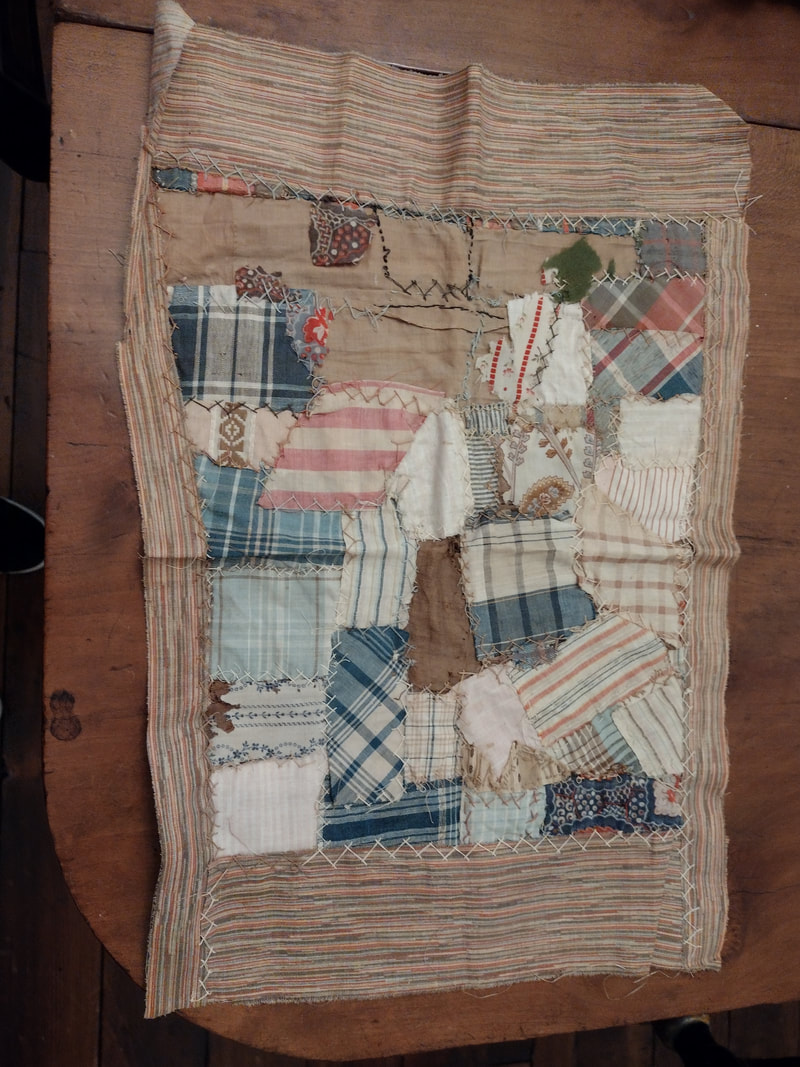|
On 19th century American farmsteads, comfort in the form of food and textiles were expected to be provided by the woman of the house. Soft, warm furnishings were made in the home or done without. Little girls in the 18th, 19th, and early 20th centuries worked samplers where they could practice alphabet and numbers while gaining facility with needle and thread. Most of us have seen examples of these; considered antiques, they are collected. Somewhat less well known, quilting was another needle art that introduced young girls to necessary homely skills that could be decorative as well as useful. Making warm quilts for a growing family was an expected task, just as weaving coverlets had been before inexpensive cloth became widely available and looms were put away. We have a couple of these little textiles out on display in the dining room of the North House Museum as part of our celebration of National Quilt Month in March (and into April). Their makers were probably stitching with their dolls in mind. Jane Hughes, retired librarian and long-time volunteer in the Greenbrier Historical Society’s archives, shared with us a quilt her grandmother made as a girl of 10. Known as Redwork, these white quilts with red embroidered animals, plants and people were popular in the late 1800s - early 1900s, and pattern books could be purchased. The actual quilting was as important as the embroidery, though many examples of unquilted tops exist. The quilting was less fun than making embroidered pictures. If you look closely at Nellie’s quilting, you can’t help but be impressed with her neat lines, her ability to achieve 10 to 12 stitches to the inch, and the perseverance required to complete the quilt. We don’t know the identity of the girls who created the doll-sized quilt tops in our collection, but we do know about Nellie of the Redwork quilt, not the least because she signed and dated her work. If only every one of our quiltmakers had done that! Born in 1888 to a family in the Midwest, Nellie Edith Bray Becker grew up to be a no nonsense, practical farm wife. She made handsome quilts for her family but maintained that beauty was beside the point of a quilt; and yet, this her first quilt, a sampler finished in 1908, shows a definite penchant for decorative work and awesome stitching.
0 Comments
|
SOCIAL |
PHONE |
ADDRESS |
814 WASHINGTON ST W
LEWISBURG, WV 24901 |
Experiencing issues with this page? Email [email protected].







 RSS Feed
RSS Feed
